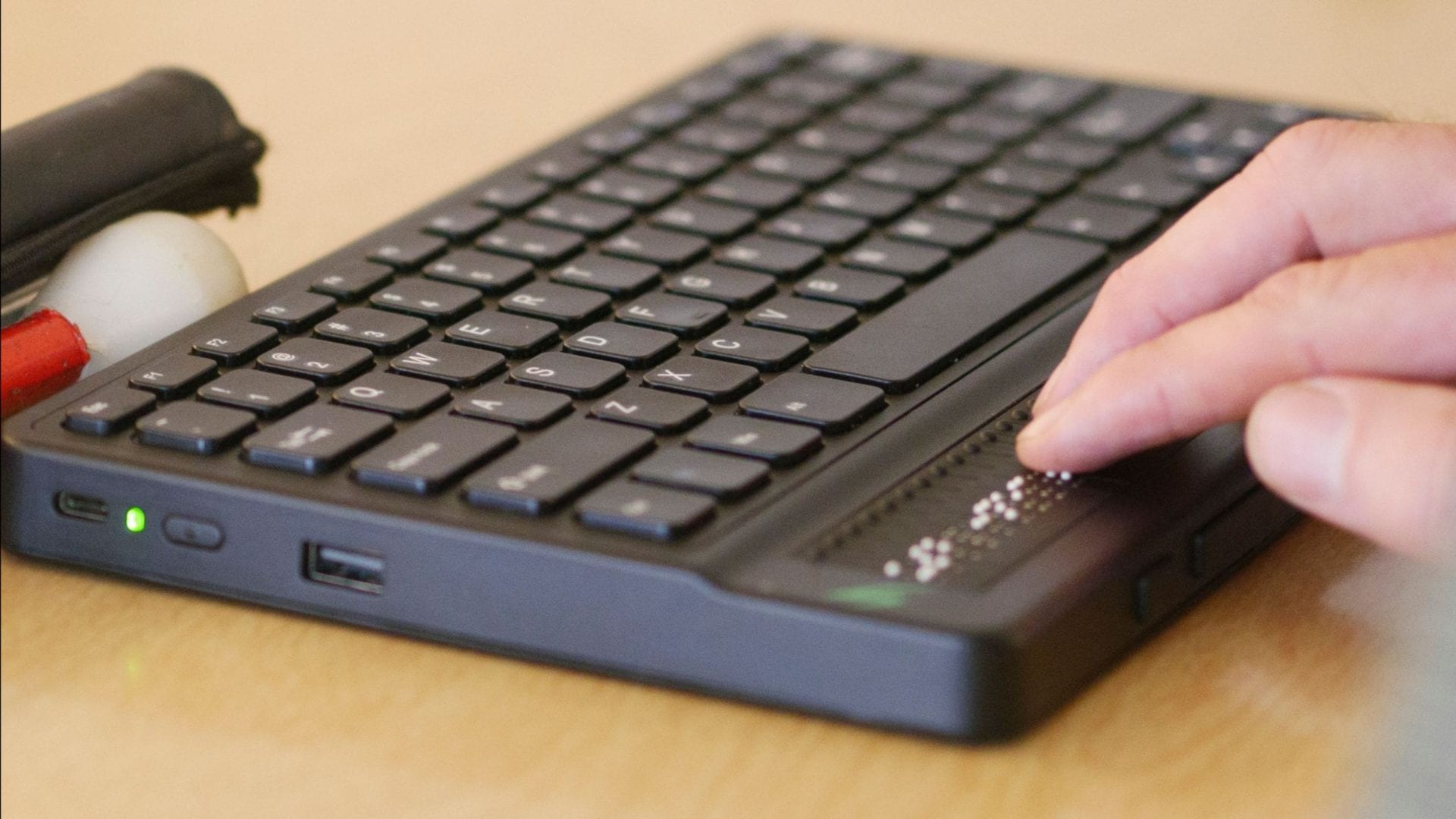Environment: dev.aph.org — Current roles: guest
 Coding With Mantis Q40
Coding With Mantis Q40
The Mantis Q40, with its combination of 40 braille cells and a QWERTY keyboard, is the perfect companion for learning to code! Let’s go over exactly why coding is important, what challenges students face while learning it, and how the Mantis can help!
Why Coding?
You hear about the importance of coding all the time, so I’ll cut right to the chase here: coding is important not only because of the potential for employment after school, but also because of the skills that coding helps students develop.
We’ll start with coding jobs. They pay well, and, this is key, they are accessible. With a screen reader and a braille display, preferably one with a QWERTY keyboard (cough, cough), anyone can learn to code efficiently. Yes, there will be challenges, and we’ll cover those in our next topic, but it’s a good, accessible job that will help set students with blindness or low vision up for independence and a productive life.
But that’s not all! What if your student likes to code but doesn’t want to be a coder? I like to fish, but I’m not about to try to become a professional angler. That’s fine. There’s still a lot of skills one can learn from coding. Logic is the basis for coding and also a pretty good skill to carry around in your noggin. You’ll also learn creativity, problem-solving, and planning, among many other skills. These will help you in whatever career you choose to pursue.
I know how to code. Do I ever write code as a part of my job? No, not at all, never been paid to code in my entire life, but it’s been an invaluable asset as I navigate a world that depends more and more on software.
Coding Challenges and How the Mantis Helps!
Okay, so now let’s talk about the challenges! The number one challenge is going to be that coding is very, very specific. It’s finicky. If you get a comma, a parenthesis, or a semicolon in the wrong place, it could break your entire program. It’ll fail to build, and you’ll get some vague error message that requires you to hunt down the issue. You can find all this information with just a screen reader, but it’s not going to be easy. With the braille on your braille display, you’ll be able to read every single character as you read your code line by line, and you won’t have to make assumptions or rely on the screen reader to know exactly how your punctuation is laid out.
Alright, I hear you saying, “You’ve sold me on the need for a braille display, but why the Mantis Q40 exactly?” The thing that makes the Mantis really unique, is its QWERTY keyboard. With that, you can be coding fast, with your typing speed not tied to your ability to memorize rules of braille, but just limited by how quickly you can type. With the Mantis, you’re going to have your keyboard right there with your braille display making it much easier for you to type and review your code as you go.
Speed is going to be another big challenge for any new coder. With some of the visual programming languages that are out there, it’s key that coders that are blind or low vision keep pace. To do that, you need a QWERTY keyboard and a braille display and the Mantis Q40 is the perfect device to meet that need.
The Takeaway
Coding is a worthwhile skill even if you don’t plan to pursue it as a career. Coding requires a lot of precision and that means braille. Coders need any advantage they can get and that means a braille display and a keyboard together. The Mantis Q40 can be the perfect asset to help your students learn to code, regardless of their professional goals.
Learn more about Mantis Q40 and how it compares to other braille displays.
Share this article.
Related articles
A thread of possibilities, including career opportunities in the ever-expanding computer science field, will unravel as students learn to code....
From biology to anatomy to engineering, we have a variety of products and resources to supplement your students’ education. Check...
In science classes, sighted students are taught the basics of electricity, coding, and programming through a variety of hands-on activities....
